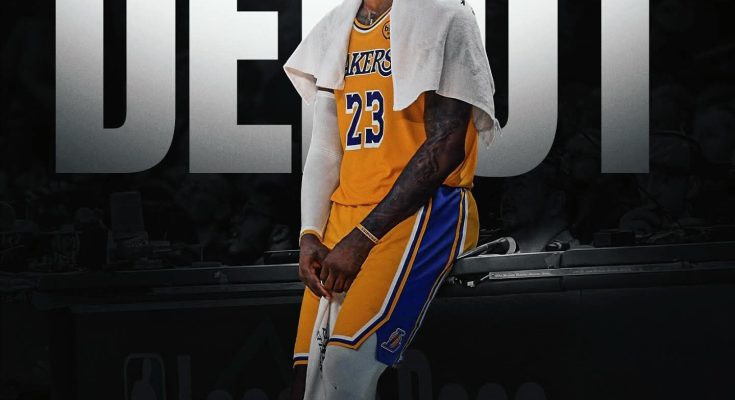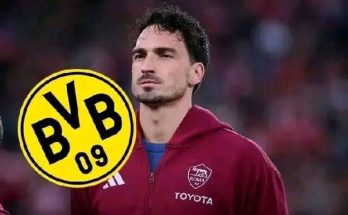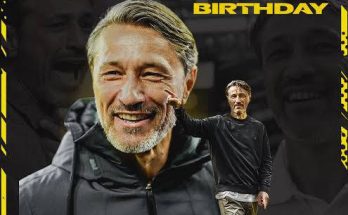The Lakers’ recent announcement that they are taking a “patient approach” to LeBron James’ rehab, with a mid‑November target for his return, carries layers of significance that ripple far beyond just one player’s timeline. In the short term, it forces the team to recalibrate expectations, manage internal dynamics, and perhaps alter their roster strategy; in the longer view, it signals how the Lakers prioritize LeBron’s health, their championship ambitions, and the delicate balance of managing aging superstars in today’s NBA.
To start, let’s examine what is known so far. The Lakers have officially ruled LeBron James out for at least three to four weeks as he deals with sciatica, reportedly on his right side, stemming from glute nerve irritation. (Reuters) That injury had already impaired his usual offseason ramp-up, meaning LeBron did not participate in training camp and has sat out of preseason games. As per ESPN’s Shams Charania, both LeBron and the Lakers are targeting a mid‑November season debut, but with clear caveats: he won’t be rushed back, his re-evaluation won’t occur until October 30 at the earliest, and even then, he would need weeks of conditioning, “basketball shape” work, before actually seeing game minutes.
In announcing a “patient” approach, the Lakers are implicitly conceding they will not sacrifice long‑term health or durability in favor of short‑term gain. For a player entering his 23rd season—who will turn 41 in December—such discretion is arguably not optional. Attempting to force an early return from a nerve injury can lead to setbacks, recurring pain, or compensatory issues elsewhere in the body. In that light, the Lakers’ posture suggests they are willing to bear short-term costs in hopes of preserving LeBron’s effectiveness deeper into the season and playoffs.
But that decision is not costless. The Lakers must now operate without arguably their greatest asset for a stretch—possibly the first 10 to 15 games of the 2025–26 season, depending on how cautious the timeline ends up. (CBS Sports) Such a stretch magnifies the burden on Luka Dončić, whose presence was itself designed in part as insurance for such absences. The question becomes: Can the supporting cast—Austin Reaves, DeAndre Ayton, Rui Hachimura, Jarred Vanderbilt, and so on—hold up while LeBron ramps back into the rotation? Chemistry, rotation consistency, and resilience will be tested.
From a coaching and system standpoint, the Lakers must prepare to operate without their iconic floor general for a substantial period. That means establishing offensive sets that don’t rely on LeBron’s playmaking or positional versatility; defenders must adapt to new assignments; and roles may shift rapidly in response to injuries, form, and matchups. Also, managing expectations among players and fans will be key—nobody wants to see the roster buckle under early-season pressure.
An additional wrinkle: LeBron’s ability to reach league thresholds for awards or honors. Many NBA awards (for example MVP, All‑NBA) require minimum games played or certain criteria to qualify. Missing a chunk of games—especially in the first month and a half—could jeopardize his ability to meet those thresholds, or at least weaken statistical cases. (CBS Sports) That said, at this point in his career, legacy is less about individual awards and more about postseason success, so perhaps the Lakers care less about that tradeoff.
Another dimension is messaging and optics. The Lakers’ front office is implicitly assuring fans and stakeholders that they are not recklessly gambling with LeBron’s body. The term “patient approach” signals discipline, long-term thinking, and perhaps wisdom accrued from past injuries. It conveys respect for LeBron’s aging frame, acknowledging that he’s no longer the 30‑something force who could bounce back indiscriminately. In doing so, they moderate expectations for early returns or showy bursts, effectively telling fans—and opponents—that LeBron’s comeback will be careful, calibrated, and measured.
Yet this stance also cedes some narrative ground. If the Lakers stumble early, critics will say LeBron’s absence cost them wins. If they limp through November, questions might emerge about whether LeBron was overhyped, or whether this season is more about “finishing gracefully” than contending aggressively. The optics are delicate: too much patience, and the team looks risk‑averse; too much haste, and the player risks injury relapse. The Lakers must thread that needle.
From LeBron’s perspective, this is possibly among the most critical injury stretches of his career. At 40, recovery dynamics are inherently slower. Even with elite medical care, recovery of nerve injuries can be unpredictable. A premature return could exacerbate symptoms or lead to compensatory damage (e.g. in lower back, hips, knees). A cautious timeline gives more margin for error, more buffer for setbacks, and more control over progression. It’s also psychologically savvy: LeBron knows that any failure or regression in recovery could cast long shadows over his final seasons.
If all goes well, by mid‑November he could be plugging into a team that’s had time to build its rhythm sans him, with players in defined roles and rotations adjusted. That gives him a cleaner landing zone. He enters not into chaos, but into structure.
Of course, “mid-November” remains just a target—not a guarantee. Realistically, if re-evaluation on October 30 shows lingering nerve irritation, or if conditioning lags, the timeline could stretch into later November or even December. Some analysts caution that sciatica and nerve issues often require extended, slow progression—especially for high-minute, high-impact athletes. (SI) The “earliest return” is not the “likely return,” especially in a high-stakes, ultra-cautious plan.
As the season unfolds, the Lakers’ handling of this rehab will become a bellwether for how modern NBA teams manage legacy players in their twilight years. There’s a tension between deploying star power early to set a tone, versus preserving health for deep postseason runs. In LeBron’s case, with age and injury history as active variables, the latter may simply override the former.
So, in terms of unfolding dynamics:
— The next major checkpoint is October 30, when James will be officially re‑evaluated. How that assessment goes will either confirm the mid-November aspirational target or push it further.
— In the interim, the supporting cast has a burden: sustain competitive play, perhaps punch above their weight, and adjust to being the floor generals in LeBron’s absence.
— Coaching and medical staff must collaborate closely on workout, conditioning, and basketball-specific ramp-up protocols—monitoring minute loads, fatigue, muscular imbalances, and reactivity to nerve stress.
— The Lakers may need contingency reinforcements if early-season performance falters too badly. Trades or short-term pickups might compensate.
— Fan patience, media narrative, and internal morale must be managed. The team must communicate progress transparently without overpromising.
— When LeBron does return, careful reintegration will be necessary. Minutes may be restricted early; rotations may be staggered; matchups will be chosen with caution. He’ll likely return gradually, not precipitously.
— Ultimately, performance will be judged not just by return date but by durability, effectiveness, and whether he can still be an impact player in high-stakes postseason games.
In conclusion, the Lakers’ decision to adopt a “patient approach” with LeBron James’ rehab, aiming for a mid-November return, is a prudent but high-stakes posture. It reveals an organization balancing desire and discipline, respect and urgency. For LeBron, it’s a nod to the realities of aging, while preserving opportunity for late-season relevance. For the team, it’s a gamble: survive without your greatest star early, and hope when he returns, he’s fresher, sharper, and able to carry deeper into the season. The early games will be a test of the Lakers’ identity without LeBron; the real measure will come when he steps back on the court and whether that patient rehab was enough to keep him effective—or whether time and injury have begun to catch up.



